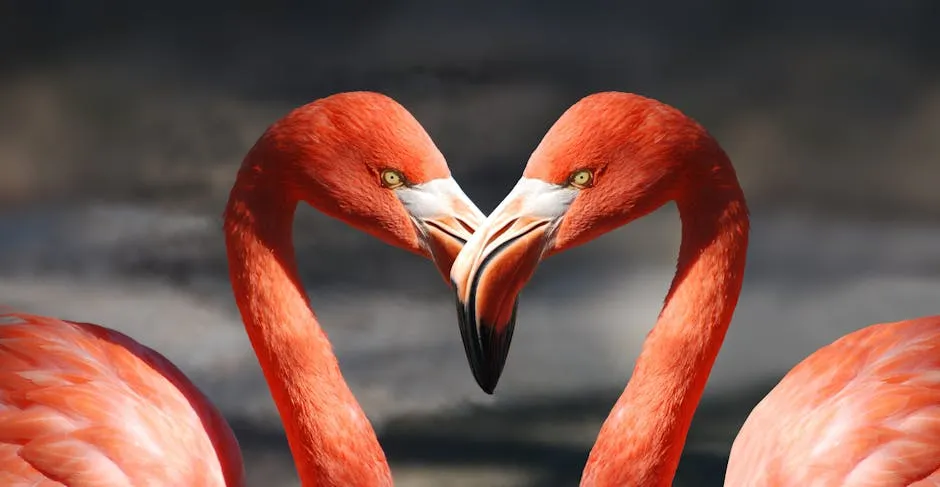
Why Do Flamingos Lose Their Pink Color?
Introduction
Flamingos are famous for their striking pink color. This vibrant hue captures our attention and sparks curiosity. Understanding why these birds lose their pink color is essential. In this section, we will explore the various reasons behind flamingos’ color changes. If you’re a flamingo enthusiast (or just a fan of quirky decor), you might want to check out this adorable Flamingo-themed plush toy. It’s the perfect companion for your flamingo watching sessions!
Summary and Overview
Flamingo chicks start out gray or white. Over time, they develop their iconic pink feathers. This transformation relies heavily on their diet. Carotenoids, found in their food, play a key role in this process. Foods like brine shrimp and algae are rich in these pigments. Environmental factors also influence color changes. For instance, parenting duties can impact their coloration. During breeding, adult flamingos often share food with their chicks. This sharing can temporarily dull their pink hue. Color is not just for show; it plays a vital role in their behavior and mating rituals. The brighter the color, the more attractive they are to potential mates. Have you ever thought about adding a splash of flamingo flair to your home? Consider this stunning Flamingo-themed wall art. It’s a conversation starter and a great way to express your love for these elegant birds!
The Science Behind Flamingo Color
The Role of Diet
Flamingos rely on specific foods for their pink color. Their diet is rich in carotenoids, a type of dietary pigment. Foods such as brine shrimp and blue-green algae are essential. These foods contain beta-carotene, which contributes to their vivid color. When flamingos consume these pigments, their bodies metabolize them. The liver processes the carotenoids, turning them into pigments. These pigments are then deposited into their feathers and skin, creating the iconic pink hue. Without a proper diet, flamingos may lose this coloration. In fact, studies show that flamingos need a consistent intake of carotenoids. If they don’t get enough, their feathers can fade. This loss in color highlights the importance of a nutrient-rich diet for flamingos.
Metabolism and Coloration
Flamingos are well-known for their vibrant pink feathers. This color comes from carotenoids, which are dietary pigments found in their food. Carotenoids are abundant in brine shrimp and certain types of algae. Studies show that foods like carrots and sweet potatoes also contain these pigments, with carrots having about 1,500 micrograms per 100 grams. When flamingos consume carotenoids, their bodies metabolize these pigments. The liver plays a critical role in this process. It breaks down carotenoids into forms that can be absorbed. Once absorbed, these pigments get deposited into the feathers and skin, giving flamingos their signature color. Interestingly, not all flamingo species metabolize food the same way. Some species may extract more pigments from their diet. This leads to variations in color intensity.Factors Leading to Color Loss
Environmental Changes
Changes in the environment can significantly affect flamingos’ diets. Habitat destruction, such as wetland drainage, reduces food sources like brine shrimp. When food becomes scarce, flamingos struggle to maintain their pink coloration. Environmental stressors, like pollution, can also impact pigment availability. Such changes can lead to a noticeable loss of vibrant color.
Health and Stress
Health issues can hinder a flamingo’s ability to process carotenoids. Stress factors, like overcrowding or predation pressure, can also play a role. Stress affects liver function, making it difficult for flamingos to absorb pigments efficiently. As a result, health problems or stress can cause their feathers to appear paler, diminishing their iconic pink hue.Parenthood and Its Impact on Color
Feeding Chicks
Parenting can also influence a flamingo’s color. When flamingos feed their chicks, they lose some of their pink hue. This happens because the carotenoids are transferred to the crop milk, which is rich in nutrients. Consequently, adult flamingos may appear paler as they provide care for their young. The vibrant pigments are diverted to help nourish their chicks. This parental investment is essential for chick development, but it comes at a cost to the parents’ coloration.
Temporary Color Changes
Color loss during the breeding season is often temporary. After the chicks mature, adult flamingos can regain their striking pink hue. As they return to a diet rich in carotenoids, their colors will begin to brighten again. This cycle demonstrates the adaptability of flamingos. Their ability to rebound in coloration reflects their resilience and the importance of diet in maintaining their iconic appearance.
Regaining Pink Color
Diet Restoration
Flamingos have a unique ability to regain their pink color. When they return to a diet rich in carotenoids, their feathers start to brighten again. Carotenoids are found in foods like brine shrimp and algae. These pigments are crucial for restoring their vibrant appearance. The timeline for color recovery varies. Generally, it takes several weeks for flamingos to regain their pink hue fully. After a few weeks of consuming carotenoid-rich foods, you’ll notice a significant change in their coloration. This dietary restoration is essential for their stunning looks.
Behavioral Changes Post-Breeding
Once flamingos regain their pink coloring, their behavior shifts. Their vibrant hue becomes a key factor in attracting mates. The brighter the color, the more appealing they are during mating rituals. This connection between color and social behavior is fascinating. Flamingos engage in elaborate courtship dances, showcasing their vibrant feathers. These rituals are not just for show; they signal health and vitality. As they regain their pink, flamingos become more active in social interactions. Color dynamics play a crucial role in their relationships and mating success.
Conclusion
Flamingos’ color changes are influenced by various factors, including diet and breeding. Understanding these changes helps us appreciate their behavior and ecology. Their ability to regain their pink hue reflects resilience and the importance of a nutritious diet. So, the next time you see a flamingo, remember the fascinating journey behind its color!
All images from Pexels




